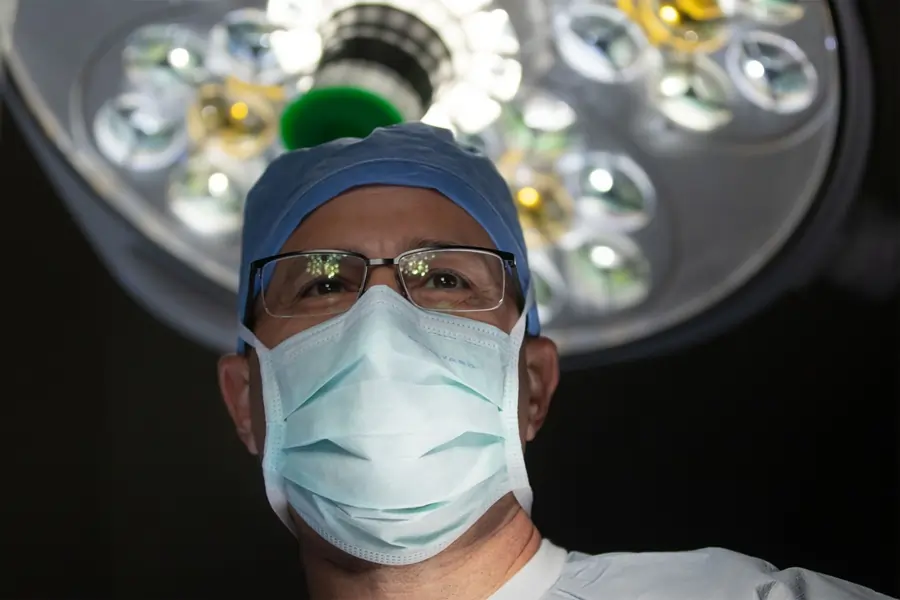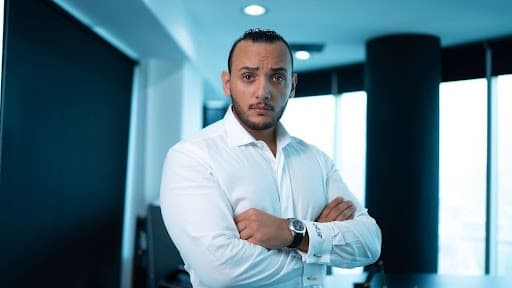
Dr. Jonathan D'Cunha is a distinguished figure in the field of cardiothoracic surgery, renowned for his groundbreaking work and leadership in surgical education and lung transplantation. He serves as the Chair of Cardiothoracic Surgery at Mayo Clinic Arizona and holds a professorship at the Mayo Clinic College of Medicine. Dr. D'Cunha's career is marked by notable contributions to the medical field, such as his pioneering work in ex vivo lung perfusion (EVLP) and the development of surgical education models that have been widely adopted. With a robust background in microbiology and immunology, he has made significant strides in integrating innovative techniques and technologies into thoracic surgery. This article presents an in-depth interview with Dr. Jonathan D'Cunha, offering insights into his journey, motivations, and vision for the future of cardiothoracic care.
Background and Journey
You've led pioneering work in ex vivo lung perfusion (EVLP) and transplant innovation. What motivates you to keep pushing the boundaries of what's surgically possible?
What drives me is the opportunity to give patients a second chance at life. EVLP has fundamentally shifted the paradigm of lung transplantation, allowing us to assess, potentially rehabilitate, and utilize organs that would have once been discarded. That means more lives are saved, and fewer people die while waiting on the list. But beyond the technology, it's the people—patients and their families—who fuel the urgency to innovate. Every breakthrough, every surgical advance, is about delivering better outcomes and redefining what's possible in cardiothoracic surgical care. The collaborative spirit of the field also inspires me. When you work with teams who are just as passionate about challenging the status quo, it becomes less about what we can do today and more about what we must do for tomorrow.
How has your work at Mayo Clinic Arizona allowed you to approach complex lung failure cases differently than earlier in your career?
Mayo Clinic Arizona has created an innovative environment for managing complex cases of lung failure, offering a level of integration and support that’s difficult to replicate elsewhere. The multidisciplinary model here isn't just a philosophy—it's built into our daily workflow. I'm able to collaborate in real-time with experts in pulmonary medicine, critical care, advanced imaging, and many other fields, which sharpens our decision-making and broadens our options for high-risk patients. Earlier in my career, some of the solutions we now routinely offer—such as ECMO strategies—are becoming standard tools in our arsenal due to the infrastructure and commitment to innovation. That environment has allowed me to rethink what’s possible surgically.
Insights and Innovations
With such a strong background in minimally invasive and robotic thoracic surgery, what technological advancements are you most excited about right now?
The advancements in minimally invasive and robotic surgery are truly transformative, not just for the field of thoracic surgery but for patient care as a whole. The precision, flexibility, and reduced recovery times that robotic surgery offers are game-changers, particularly in complex procedures where visualization and dexterity are critical. One of the most exciting advancements I'm following closely is the integration of AI and machine learning into robotic systems. These technologies will enhance real-time decision-making, improve surgical precision, and reduce human error. Another area of excitement is the development of advanced imaging techniques—such as augmented reality (AR) and 3D mapping—that can guide surgical navigation with unprecedented accuracy. These technologies hold the potential to make even the most intricate thoracic procedures safer and more efficient, enabling us to push the boundaries of what is surgically possible.
You've mentored hundreds of individuals across various stages of training. What do you believe is the most important lesson you try to pass on to the next generation of surgical leaders?
The most important lesson I try to pass on is that being a great surgeon isn't just about mastering technical skills, though that is undeniably crucial. It all starts with a fund of knowledge, and mastering the content through reading is the base upon which greatness is built. Next, it's about developing a mindset that combines precision, empathy, and a commitment to continuous learning. The ability to approach each patient as an individual, to communicate effectively with the entire care team, and to remain open to new ideas and techniques—those are the qualities that set apart truly impactful surgical leaders. I stress the importance of being resilient in the face of failure and uncertainty because those are the moments that often teach us the most. Finally, surgery is a field of continuous evolution, and I want the next generation to understand that one must continually evolve.
D'Cunha's journey and insights illustrate a profound commitment to advancing the field of cardiothoracic surgery, both through clinical practice and the cultivation of future leaders. His efforts at Mayo Clinic Arizona and beyond continue to shape the landscape of surgical innovation and education.
Expertise in Surgery and Transplantation
Your career spans roles as a surgeon, scientist, educator, and transplant leader. How do you personally define professional integrity across those disciplines?
Professional integrity, to me, is the foundational principle that unites every role I’ve had—as a surgeon, scientist, educator, and Department/Institutional leader. It means holding oneself to the highest ethical and moral standards, regardless of the pressures or challenges that one faces. In surgery, integrity is about being honest with patients and their families, making decisions grounded in their best interests, even when the choices are difficult. As a scientist, it means rigorously pursuing truth and transparency, ensuring that our research methods and conclusions can withstand scrutiny and ultimately advance the field responsibly. As an educator, integrity involves a commitment to nurturing the next generation with honesty, humility, and respect, teaching not just technical skills but also the values that sustain this profession. Across all these disciplines, professional integrity serves as the guiding compass for my decisions and actions, ensuring that the work we do truly benefits patients and society.
You've been at the helm of launching Mayo Clinic Arizona's DCD heart transplant program. What unique challenges did that involve, and how did you overcome them as a leader?
Launching a DCD (donation after circulatory death) heart transplant program is one of the most rewarding challenges I've helped navigate with our team. The biggest hurdle isn’t just technical—it’s building the right culture and infrastructure to support a program that pushes the boundaries of conventional transplantation. DCD hearts require highly coordinated timing, specialized perfusion technology, and a team that’s deeply aligned in purpose and trust. At Mayo Clinic Arizona, we approached this by creating a multidisciplinary framework from day one—surgery, perfusion, anesthesia, critical care, procurement, and ethics were all at the table. As a leader, my job was to unify that group under a shared mission: to expand the donor pool and save more lives safely. We focused on rigorous protocols, simulation training, and transparency in outcome tracking. Leading through those challenges meant listening carefully, adjusting rapidly, and maintaining a clear vision that innovation must always serve patient benefit first. That clarity helped us navigate the complexity and build something truly forward-looking.
Throughout your academic career, you’ve published extensively on thoracic oncology and transplant science. Is there one publication or discovery you’re particularly proud of?
It’s hard to choose just one, but if I had to highlight a significant contribution, it would be our work exploring how ex vivo lung perfusion (EVLP) can not only preserve but also rehabilitate marginal donor lungs. That line of research helped shift the conversation from simply preserving organs to actively improving them before transplant, which has real implications for expanding the donor pool and improving patient outcomes. It was one of those moments where clinical need, scientific opportunity, and collaborative energy aligned. I’m proud not just of the data, but of what it represents: a commitment to challenging traditional boundaries in transplant science. And more broadly, I take great pride in publications where I’ve mentored residents and fellows—seeing their names alongside mine and knowing those experiences are helping shape the next generation of surgeon-scientists is incredibly rewarding.
Vision for the Future
Looking ahead, what’s your long-term vision for how Mayo Clinic Arizona can continue advancing cardiothoracic care on a national and global scale?
At Mayo Clinic Arizona, our long-term vision is to continue building a globally recognized hub for excellence in cardiothoracic care—one that seamlessly combines cutting-edge science with deeply personalized medicine. We’re not just treating disease; we’re pushing the boundaries of what's possible in surgical innovation and multidisciplinary collaboration to care for severe and complex patients, seeing it as a category of one destination medical center. On a national and global scale, this means leading in all aspects of cardiothoracic surgery and advancing the care of individuals with end-stage heart and lung disease through innovative approaches. We utilize our research to address questions that aim to transform the way we deliver care and enhance quality and outcomes. But just as important, we’re investing in the next generation—training future surgeons and researchers who will carry this mission forward with compassion and integrity. Ultimately, our goal is to make Mayo Clinic Arizona a preeminent choice for cardiothoracic surgical care. Bold, Forward, Preeminent–that is our Mission for care delivery.
Dr. Jonathan D'Cunha's work at Mayo Clinic Arizona and his contributions to the field of cardiothoracic surgery reflect a commitment to excellence, innovation, and education. His vision for the future continues to inspire those within the medical community.


